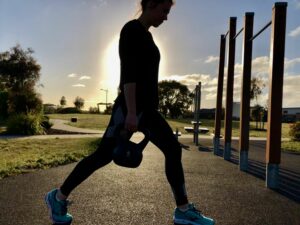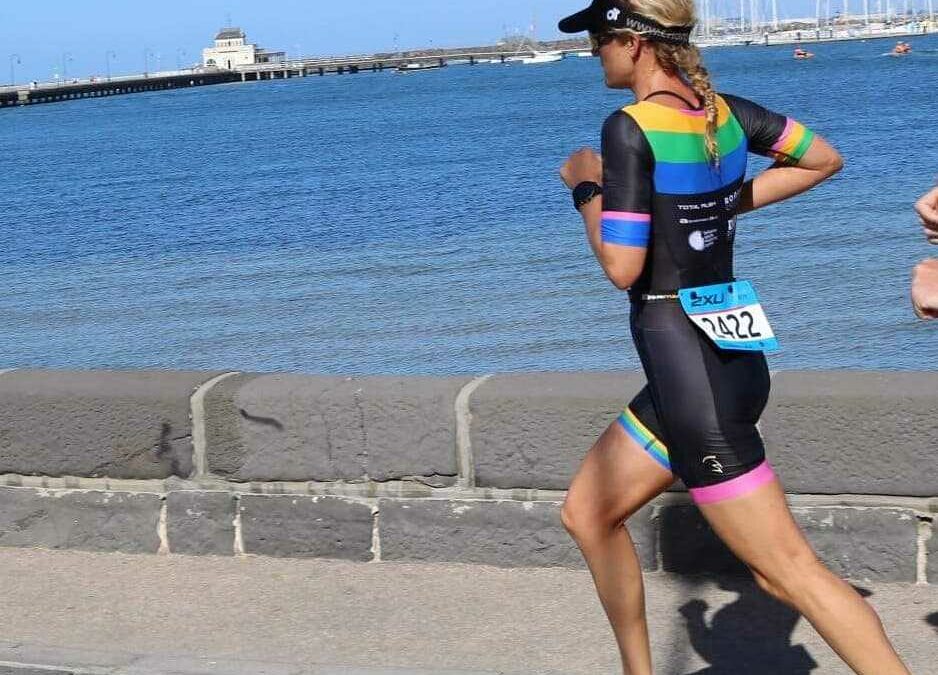Are you in the middle of you’re winter running season? Know someone that is? Overuse injuries are super common when training for events like Run Melbourne (this weekend) or the local, Surfcoast Century (September). Have you struggled with your training load? Seem to be always plagued by injury before your big event? Well, this may be part of it!
Overuse injuries occur at the musculotendinous junction – the area of muscle where it becomes tendinous and generally attaches to a bone. In most instances, overuse injuries affect tendons and occur when the load from exercise is too great for the body to adapt and repair in time for the next workout. Exercise leads to stress on our joints and muscles, and normally the body is able to cope with this stress and results in strength gains and improved fitness. This is the remodelling process or adaptation to exercise. When this equilibrium is interrupted, degeneration and micro-tearing may occur and the body can no longer cope with the demands placed on the tissues which ultimately leads to injury.
 The two main reasons we see a disruption to the normal adaptation phase are:
The two main reasons we see a disruption to the normal adaptation phase are:
- A rapid acceleration of the intensity, duration, or frequency of activity. Eg Too much too soon.
- A sudden spike in load when returning from injury (or a holiday) and trying to make up for lost time by pushing too hard in the early stage of training
In addition to a training routine, causes of overuse injuries include:
- a lack of appropriate muscle strength or endurance,
- poor core stability,
- muscle imbalances,
- inflexibility,
- malalignment or biomechanical issues,
- poor technique
- incorrect equipment. Eg poor fitting footwear
- change in running surfaces eg bitumen vs trail running
These type of injuries can be extremely frustrating so how can you early detect if you are on the slippery slope towards an overuse injury? Being aware of your body is the most important starting point. Generally, the first sign will be stiffness in the morning which disappears once warmed up.
Other signs of these conditions include:
- swelling,
- warmth to touch,
- redness and impaired function.
- pain lasting beyond the warm-up.
 Treatment for overuse injuries typically involves decreasing the intensity, duration and/or frequency of the aggravating activity. It is also worth trialling a change in training methods and incorporating easy and hard training days or utilising cross-training to maintain fitness. Previously we would encourage rest for these injuries but current research is in favour of continuing to load an injured area to tolerance. This may mean adding some resistance work into your weekly program or simply cutting back the length and frequency of your activity.
Treatment for overuse injuries typically involves decreasing the intensity, duration and/or frequency of the aggravating activity. It is also worth trialling a change in training methods and incorporating easy and hard training days or utilising cross-training to maintain fitness. Previously we would encourage rest for these injuries but current research is in favour of continuing to load an injured area to tolerance. This may mean adding some resistance work into your weekly program or simply cutting back the length and frequency of your activity.
When changing your training program it is advised to contact a health professional to ensure you are getting the correct program for where your body is currently at. If you do not have access to a trainer, it helps to remember the 10 per cent rule when looking to increase your training. This is not increasing your training by more than 10 per cent per week. This allows the appropriate adaptation to take place. This applies to distance, frequency and intensity of training. If in doubt speak to your Osteopath or therapist for further advice.
 As with all injuries, prevention is better than cure and a massage or osteopathic treatment can help alleviate muscle soreness and remove any dysfunctions caused by training and activities of daily living that can lead to pain. Always remember to do a proper warm-up and cool down before and after activity. Improving flexibility, strength and core stability will also help minimise overuse injuries. This will allow you to train more efficiently and ultimately produce a better result come race day.
As with all injuries, prevention is better than cure and a massage or osteopathic treatment can help alleviate muscle soreness and remove any dysfunctions caused by training and activities of daily living that can lead to pain. Always remember to do a proper warm-up and cool down before and after activity. Improving flexibility, strength and core stability will also help minimise overuse injuries. This will allow you to train more efficiently and ultimately produce a better result come race day.
So to avoid missing out on the winter fun run season, book your next consultation today (5251 5724) and get on top of those niggles before they get on top of you!
